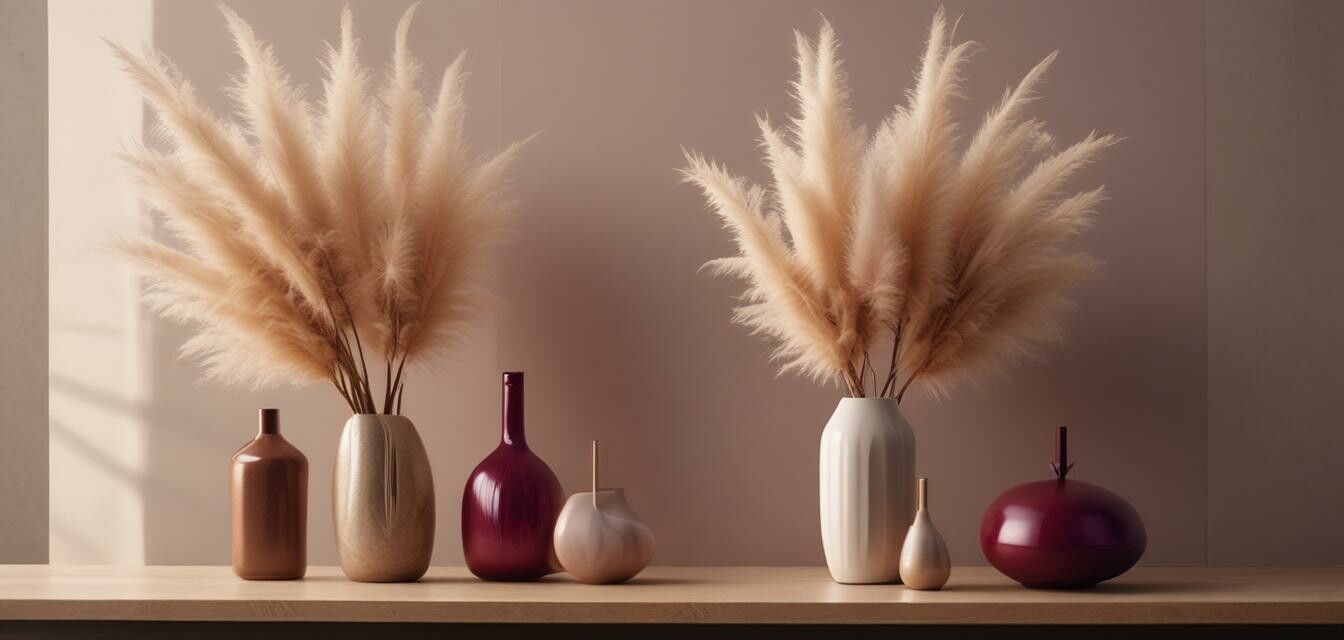
Pampas Grass and Color Theory
Key Takeaways
- Pampas grass adds texture and natural elegance to your decor.
- Understanding color theory can help you choose the right pampas grass for your space.
- Different colors evoke varying moods and aesthetics; select accordingly.
- Pampas grass works well with multiple decor styles, from bohemian to modern.
- Experimenting with contrasting colors can add depth and interest to your arrangements.
If you're looking to elevate your home's decor, utilizing color theory with gorgeous pampas grass can make all the difference. In this article, we’ll explore how to select the perfect pampas grass based on color, ensuring that your interior aesthetic is both harmonious and striking.
Understanding Color Theory
Color theory is a framework for understanding how colors interact, blend, and complement each other. Familiarity with this concept will greatly enhance your ability to make thoughtful design decisions in your home. Below are some fundamental principles of color theory:
| Category | Description |
|---|---|
| Primary Colors | Red, blue, and yellow – the building blocks of all colors. |
| Secondary Colors | Colors created by mixing primary colors (e.g., green, orange, purple). |
| Tertiary Colors | Mix of primary and secondary colors (e.g., red-orange, blue-green). |
| Warm Colors | Colors such as red, orange, and yellow that evoke warmth and energy. |
| Cool Colors | Color ranges including blue, green, and purple that create a calming atmosphere. |
The Psychological Impact of Color
Colors can significantly influence our mood and perceptions. For example:
- Yellow: Often associated with happiness and positivity.
- Blue: Evokes calmness and tranquility.
- Red: Can represent passion or urgency.
- Green: Suggests nature and balance.
- Pinks and Neutrals: Offer softness and elegance.
Choosing Pampas Grass by Color
When selecting pampas grass for your home, keep color theory in mind to create beautiful arrangements. Here’s a breakdown of how different colors of pampas grass can affect your space:
| Pampas Grass Color | Ideal Atmosphere | Perfect Pairings |
|---|---|---|
| Natural Beige | Warm and welcoming | Earth tones, pastels |
| Blush Pink | Soft and romantic | Whites, greys, and wood tones |
| Deep Burgundy | Luxurious and rich | Greens, golds, and creams |
| Colored Pampas (e.g., Green, Blue) | Fresh and modern | Neutral furniture and decor |
Mixing and Matching Pampas Grass
Don’t be afraid to experiment! Mixing pampas grass in different colors can create stunning visual effects in your decor. Here's how:
- Choose a Focal Color: Pick one primary color for your arrangement and then select other complimentary colors.
- Contrast: Use contrasting colors to highlight your selections and add depth.
- Layer Textures: Incorporate different heights and arrangements to create a more dynamic look.
Styling Tips
Beginner’s Tips for Working with Pampas Grass
- Start with a neutral base and add pops of color with pampas grass.
- Use clear vases to let the colors of the grass stand out.
- Experiment with arrangements in different rooms to see what feels right.
- Consider seasonal changes; switch up colors to match the current trends.
Conclusion
Utilizing color theory when choosing pampas grass can transform your home decor into a beautifully harmonious space. By understanding the psychological effects of colors, you can create arrangements that not only look great but also evoke the right feelings. Embrace the timeless elegance of natural dried pampas grass and see what it can add to your living space.
Pros
- Natural elegance and beauty
- Variety of colors to fit any decor
- Long-lasting and low maintenance
- Versatile for various styles
Cons
- Can be prone to shedding
- May require fluffing to maintain appearance
- Some may have allergies to dried grasses
Explore More About Pampas Grass
To dive deeper into the world of pampas grass, check out some of our other articles: